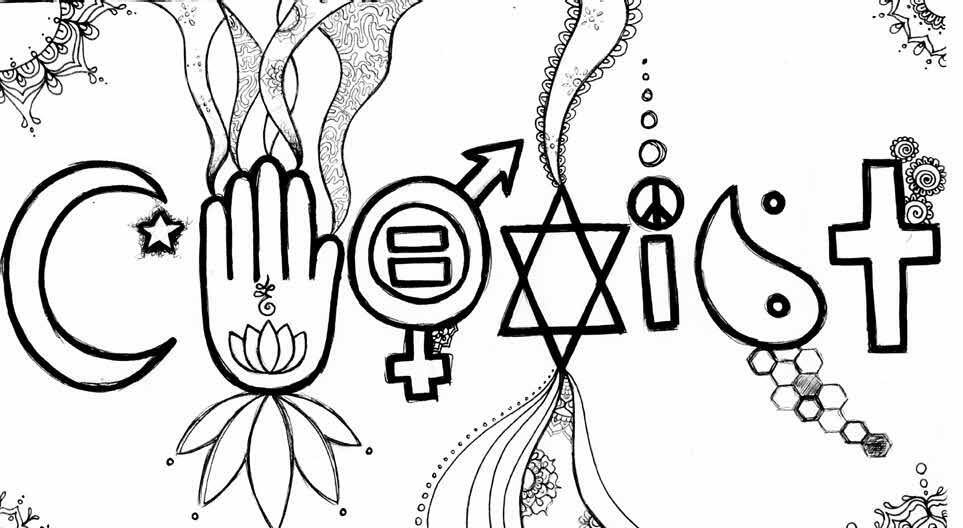
6 minute read
Partner…”
Student sexuality and the redefinition of relationship
At a party recently I got chatting to someone and then they said these words: “this is my partner.” Once upon a time I could reasonably have expected to meet their work colleague; later this term began to be used by lesbian and gay people to describe the person they were intending to spend the rest of their life with; but on this occasion, I heard it from a twenty-something man to refer to the woman he was romantically involved with — they’d been together less than three months. The rapidity with which the geography and milestones of romantic relationships are changing can leave many feeling confused and even worried, but my work has opened my eyes to the generation who are putting honesty, empowerment and love at the centre, as together they rewrite the road-map.
Advertisement
Romantic relationships come in all shapes and sizes, but there are some things we can all agree on; a “healthy” relationship should include respect, trust, affection, good communication, mutual appreciation and a certain “Je ne sais quoi” — the “spark” or “chemistry” — the electricity that defies definition, but is instantly recognisable once felt or observed. So far, we can all agree; but there are some relationship characteristics that are disagreed upon. The “correct” genders of partners and their respective sexual orientations are endlessly and fiercely debated. The recent mass shooting in Orlando, Florida is tragic proof that homophobia is still rife. This, of course, is an extreme example; but it is still quite common to hold, or encounter others who hold, the belief that the “correct” form of romance is between a heterosexual, cis-gendered man and woman exclusively.
There are obvious points of agreement and obvious points of disagreement which I could comment on, but instead, I choose the third option. What are the milestones in a relationship? My conversations with students and my own experience leads me to give this (not exhaustive) list: marriage or civil partnership, engagement, sex, “merging finances,” moving in together, falling in love, having children,
“going public” and exclusivity. Most would agree that these represent different levels in a relationship — that the addition or subtraction of any one of these significantly changes the dynamic of the relationship. I have tried to deliberately list these in a non-chronological order, for very good reason — this is my “third option,” the non-obvious point of disagreement that is changing the way young people are forming relationships. As an example, please do find someone and ask them to arrange those milestones into the time-line of a relationship — I can almost guarantee that they will have a different idea of the “normal” progression of a relationship from you.
Indeed, it was over this very issue that I found a group of good friends vehemently arguing in Chapel recently.
“I couldn’t possibly marry someone before living with them — I couldn’t really know someone until then!”
“There’s nothing wrong with having sex before being in an “official’ relationship with someone — it can just be about fun.”
“I wouldn’t even call it a relationship unless I thought I was in love with them.”
So why is there such disagreement? Why is what’s normal for one, considered taboo by another, and idiotic by a third? It’s a massive question, but I can offer a few ideas from my experience. The University of Roehampton is in South-West London and has students from over 140 different countries – the huge mix of cultural backgrounds accounts for a fair amount of the variation in opinion. I’ve met students who are expecting arranged marriages, students who never want to get married, students who won’t have sex before marriage and lots who won’t have marriage before sex — much of this is due to the expectations they formed as children, by observing those around them.

Religion also, of course, plays a large part, and it’s important to recognise this as separate from culture or upbringing. I’ve met “born-again virgins” — those who, upon converting to a certain denomination of Christianity, reclaim an identity as a virgin and thereafter refrain from sex before marriage. I also spoke to a student earlier this year, who, after much prayer, believed that God was leading him to change his opinion on physical relationships before marriage. Clearly these are not issues of upbringing, but instead born of a living faith.
The other major trends play out on a much wider field and over longer spans of time — the invention of hormonal birth control, the empowerment of women, extended life expectancy, more time spent in education and the lengthening of “adolescence” have all led to changing patterns of relationship.

A final consideration worth mentioning is one I see firsthand in London — the cost of housing. It may sound trivial, but with average rent in London being over double the na- tional average, it is a prime consideration for those moving out of university halls and into the private market. I see many students rush into living with a partner for this reason, and it is becoming more common to live with someone for years before marriage.
The students arguing in chapel over the relationship road-map will not be the first, nor last, to have this discussion — who among us hasn’t been surprised by an unexpected house-warming invitation, an unlooked-for pregnancy announcement, or the sight of one half of a couple being repeatedly asked “so when are you two going to finally tie the knot?” But what struck me about their conversation was the vehemence with which they held to their beliefs, contrasted with the acceptance they had for each other’s.
Jesus gave the commandment to “love thy neighbour” or “do unto others as you would have them do unto you.” My work with secular students has led me to believe they have a different “golden rule,” one that, on the surface, seems almost identical. It can be basically summed up as “do no harm,” but I more often hear a colloquial version that sounds something like: “if you’re happy, and you’re not hurting anyone, then that’s fine.”
In actuality, these statements are hugely different; one is based upon doing good for others, the other upon doing no harm to others. Perhaps controversially, many of my students have lost patience with Jesus’ commandment — they believe it leads to intolerance, particularly around issues of sexuality.
The merits of Jesus’ way over the secular golden rule are obvious when it comes to most injustices — if you pass a beggar on the street with the mantra “love thy neighbour” in your head, you may well stop to give money; meanwhile “do no harm” will allow you to walk by. And this example highlights a major difference in the approaches. “Love thy neighbour” forces us to be responsible for one another, to become brothers and sisters. Whereas “do no harm” is the perfect mantra for our increasingly individualised society; the only person you’re responsible for is yourself.
And it’s particularly on the issue of sexuality that the two approaches grate on one another — Christians are perceived as trying to meddle in the private lives of others when they make moral judgements, or even simply try to give advice on relationships and sexuality. Hence many of my secular students have lost patience with “love thy neighbour” — believing it leads to intolerance.
But doing unto others as you would have them do unto you has to begin with sympathy. If I literally gave others the things that I desire for myself, I probably wouldn’t do much good in the world, and a few ludicrous examples should prove this. My favourite food is pasta, but I shouldn’t try to feed it to someone who’s gluten-intolerant; I thoroughly dislike going to the gym, but that doesn’t mean I should start closing them down. Instead, we must each put ourselves in the shoes of another — “if I was them, what would I want?” And it’s here that Jesus’ advice trumps that of the secular world, because if we get it right, we can engage with others on a deeper level. Most of my pastoral work with students is listening to them talk about navigating romantic relationships — it’s a huge privilege to be allowed into this area of their lives and have the opportunity to be a force for good there.
There is a way to do good when listening and advising on relationships that doesn’t involve meddling or moralising, and it actually takes us back to the start. Romantic relationships come in all shapes and sizes, but there are some things we can all agree on; a “healthy” relationship should include respect, trust, affection, good communication, mutual appreciation and a certain “Je ne sais quoi.” In my work with students, these are the things I focus on — it doesn’t matter what my opinions are on sex before marriage, or sexual orientation, or cohabitation. We must be open to others using different road-maps, as long as they have a healthy relationship with the partner with whom they share the journey.
And I believe we can do this while maintaining an authentic Christian identity, because that list (respect, trust, etc.) doesn’t simply cover the necessary qualities of romance, but of all relationships. We can easily apply those qualities to a friend, sibling, even colleague. Even chemistry, which is often thought of as a sexual energy, can be applied elsewhere, because that spark can take other forms; the identical sense of humour of best friends, or the creativity in “bouncing ideas” with a colleague. But, most obviously, this definition can be applied to our relationship with God — our first relationship, because he loved us first, even before our birth. A relationship with the spark of living faith. When listening and advising others we can encourage love, trust and finding the spark, all while pointing to the God who is the source of all these.





